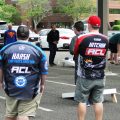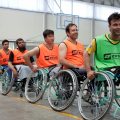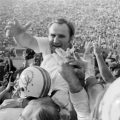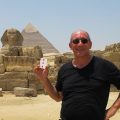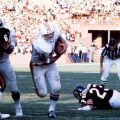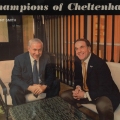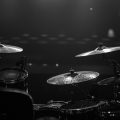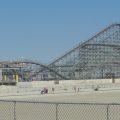Precision Pistol – Shooting For Greatness
Precision Pistol shooters are phenomenal at focus…it’s quite a feat to be able to consistently nail an eight-inch wide target from 50 yards. JerseyMan sent me to cover the annual State Outdoor Pistol Championship for the December 2015 issue. I learned some amazing stuff. You can view the PDF of the magazine article here.

New Jersey’s top marksmen, shooting for nothing but excellence.
Precision Pistol Shooting For Greatness
“It’s the ultimate badass sport with pistols.”
At the end of “Rocky III”, Apollo Creed challenges Rocky to a rubber match between the two of them…to settle the score of who is the best, once and for all. As Apollo explains to Rocky, it’s only to prove it to himself…“no TV, no newspapers, just you and me.”
Because in the end, that is all that matters to a true competitor, at any level. Self-respect.
Rich Kang, a surgeon from Maryland, has had his picture added to the New Jersey Pistol website, as the Winner of the 2015 State Outdoor Pistol Championship. His name is now engraved on the Madore Trophy.
And that’s pretty much the extent of his recognition for this exceptionally difficult achievement. The top result of a Google search for “Rich Kang” is the LinkedIn profile of a California product developer with the same name.
Precision Pistol excellence isn’t something one pursues for stardom, applause or financial gain. There wasn’t much in the way of an audience or media…other than a lanky, curious writer for a popular men’s magazine…present at the championship event. Shooter Frank Greco likens it to golf: it may not be the most exciting spectator sport, but among participants, there is an unwavering admiration for the best.
“It’s the ultimate badass sport with pistols. In the shooting world, badass is snipers,” he says. “In the pistol world it’s precision shooters.”
Greco is the Regional Vice President of New Jersey Rifle & Pistol Clubs, based in Highland Lakes. A portion of this event took place at the Central Jersey Rifle & Pistol Club in Jackson. Greco didn’t participate in the competition, but he was there to explain the mystique of it, right down to the effect of donut consumption on shooters. True.
“The sugar raises the blood pressure and affects the steady hand,” Greco says, while offering a donut to this observer. “Sugar and caffeine in excess can be Kryptonite to a shooter.”
It’s that demanding?
To say the least.
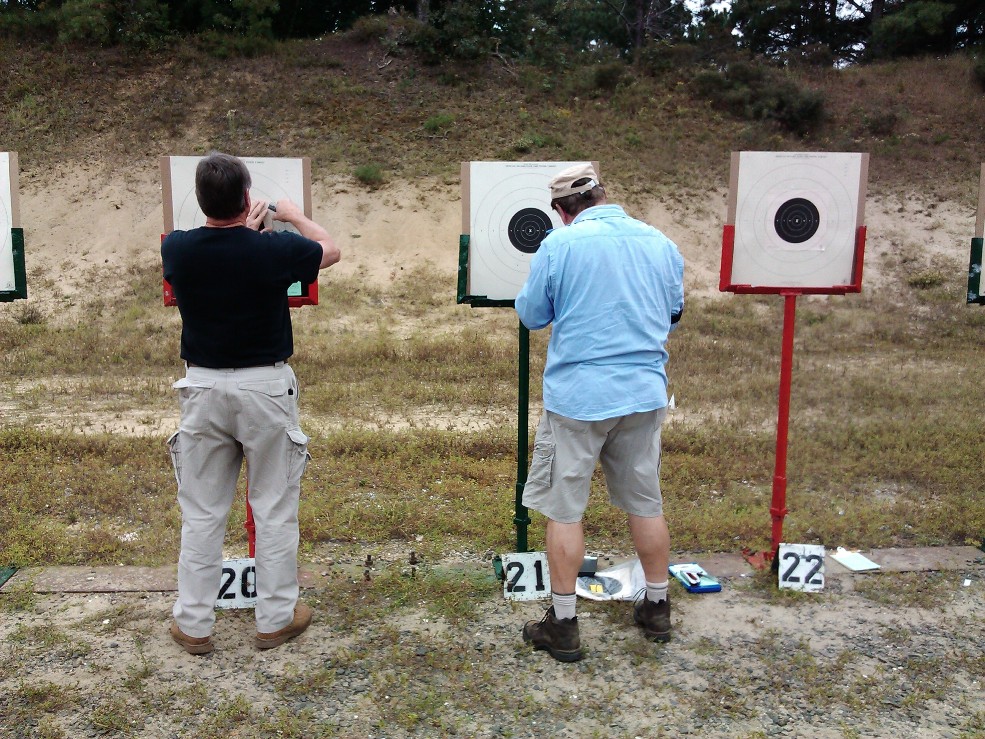
Could you hit it from half a football field away?
Picture how far 50 yards is. 150 feet. Half of a football field. Now fathom being able to steadily aim and fire a pistol from that distance and consistently hit a target eight inches wide.
That’s just for an eight-point shot. For a 10-pointer, that target is just three inches wide; for a bull’s eye…which is used as a tiebreaker if two shooters have the same score…it is just an inch and a half.
Can that even be done with normal human vision? Yes, and the shooters on the firing line this day are proving it. With multiple types of firearms and various types of shooting…moving targets, rapid fire, timed firing.
It’s a three-gun match, with .22, centerfire and .45 caliber pistols. With each type of pistol, a shooter takes 90 shots. Those 90 shots are broken down into four matches: Slow Fire is two strings of ten shots each over ten minutes; National Match Course is ten Slow Fire shots, followed by two strings of five shots each at 25 yards; Rapid Fire is two strings of five shots each over ten seconds; and the Timed Fire Match is four strings of five rounds each, with 20 seconds per string.
All day long, the barrage goes on. Casings litter the ground. Wisps of dust float from the dune behind the targets. The unmistakable odor of gunpowder fills the air. Wrists snap back in recoil with larger pistols. The noise is thunderous and deafening at times, but that’s the only aural distraction allowed. No talking or other sounds behind the line. During one match a ringing smartphone is immediately shut off; only in church could that be more embarrassing.
It’s grueling, this full day of shooting. Comfortable footwear is a must.
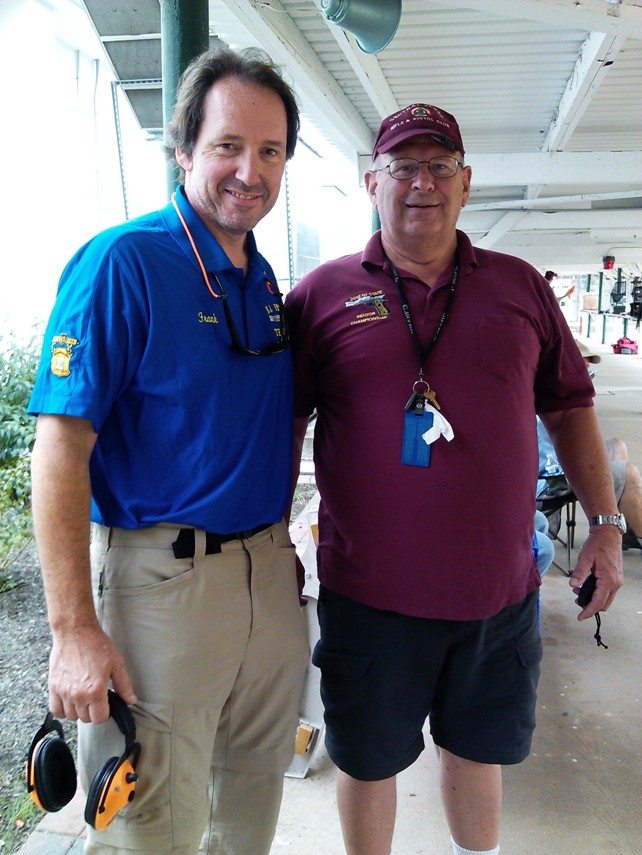
Frank Greco (left), with Ed Glidden (right), the director of the match.
Between rounds a horn sounds and a red light begins flashing. When the light is flashing, guns must be down, and must remain untouched until the flashing stops.
Ed Glidden, the director of the match, calls out instructions to the shooters, obviously with safety as the top priority. Cease fire, magazines out, make the firing line safe. Empty chamber indicators installed. Check your gun; check your neighbor’s gun. And so on, dozens of times. Glidden’s role looks boring to someone witnessing the action. But needless to say, it’s an essential one.
Part of Glidden’s occupation is training shooters in gun safety, including teaching youngsters in the club’s highly touted junior program. “Individual training,” he says, “is keeping the gun pointed in a safe direction at ALL times and treating every gun as if it were loaded. Constant awareness of the range officers and other shooters, to prevent and/or correct the slightest infraction until safety becomes a habit. Any unsafe practice will result in expulsion from the match and the range.”
The Central Jersey Rifle & Pistol Club people have a reputation for their focus on safe handling of lethal weapons. They are frequently praised for it in online reviews. It is particularly impressive to see younger people on the firing line, some barely in their teens, completely comfortable handling firearms. Partly because of Glidden’s repetitious direction, safety is second nature in this competition.
Besides, with the concentration required at tournaments like this, competitors have more than enough to occupy their minds.
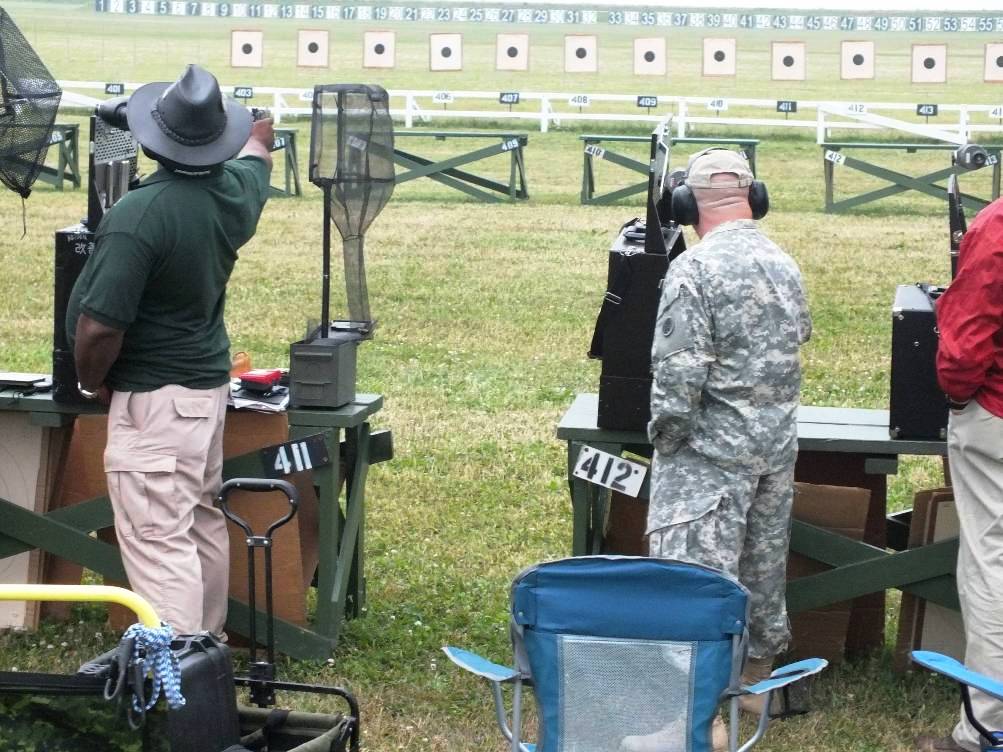
Lateif Dickerson (left), who has forgotten more about self-defense than most of us know. (photo courtesy of Lateif Dickerson)
Watching the shooters it appears as though they are cool as ice, with the focus, the concentration, the steady hand. But as one of the better shooters on the line can tell you, it takes years to develop this composure. And even he still grimaces at the occasional subpar shot.
Lateif Dickerson is the master instructor at the New Jersey Firearms Academy. His resume of other titles is very impressive: Certified Pistol Instructor, Range Safety Officer, Combat Handgunner at the School of Defensive Firearms, the list is long. He’s been training civilians, police and military for 19 years in various weapons usage and self-defense.
Dickerson can tell you a bit about becoming adept enough for this competition. There are three stages, he says…know how, physical conditioning and mental conditioning.
Know how is mastering the fundamentals… like stance, breath control, and recoil management. Stance “should be as comfortable but as stable as possible. Think like a crane; your legs are the outriggers, your arm is the boom.” Breath control is “basically holding long enough so you aren’t moving.” Recoil management is the ability to “consistently recover to the same place when shooting.”
Then there’s the physical conditioning.
“A match can go from 9:00 AM – 4:00 PM, or longer. If you start fatiguing during a match your performance will fail. You must be able to hold the weight of your arm and gun up all day – and steady. Holding steady requires an isometric tension that needs to be developed also.”
But the mental preparation is by far the toughest part.
“The ONLY thing that should exist in your mind is that your sight is where it’s supposed to be as the trigger moves rearward…this is very hard. We all have a lot of noise and distractions, so conditioning your mind to focus is a process. That process is largely the challenge in shooting.”
Frank Greco emphatically agrees, sharing a story of his own self-defeat in the mental aspect of the game.
“When you’re in it, on the line, loading, in the zone, improving your score, it’s incredibly intense and extremely difficult mentally.
“One of my first times I experienced the ‘mental game’ was in the NY State Championship. The match director came over to me and asked me if I knew I was shooting better than most of the Experts and Masters. I said no, and got accidentally sidetracked, thinking I was going to win the match. The lost focus immediately showed; my shots were random and my scores went down.
“It’s vital to maintain a positive outlook and to speak to yourself in positive statements. It’s important to train your subconscious mind and create a positive self-image.”
He pulls out his smartphone and shows this observer a picture of a target, the high-value section of it riddled with bullet holes. Sometimes, he says, he needs to look at it during a match, to remind himself what he’s capable of.

The trophy is just a bonus.
It’s all undeniably worth the effort.
The true reward of Precision Pistol, as Greco relates from his own personal experience, is self-respect…the realization of one’s hidden abilities and the ability to meet the most difficult of challenges. Once a person can hit that one-and-a-half inch bull’s eye from half of a football field away, it’s hard to imagine how monthly bills could faze them.
“Great shooters have an almost Zen-like approach to shooting and how they approach their daily lives, jobs, etc. Since I started, my ability to focus has sharpened dramatically, and it’s positively benefited other areas of my life. The ability to focus on what matters, and disregard unimportant matters, literally frees your mind.
“The benefits are real, and to that extent, shooting has made me a better person.”
Did learning about Precision Pistol shooting make your day a little bit?
I hope so. If it did, I would really appreciate your support.
When you use this link to shop on Amazon, you’ll help subsidize this great website…at no extra charge to you.
Thanks very much…come back soon!
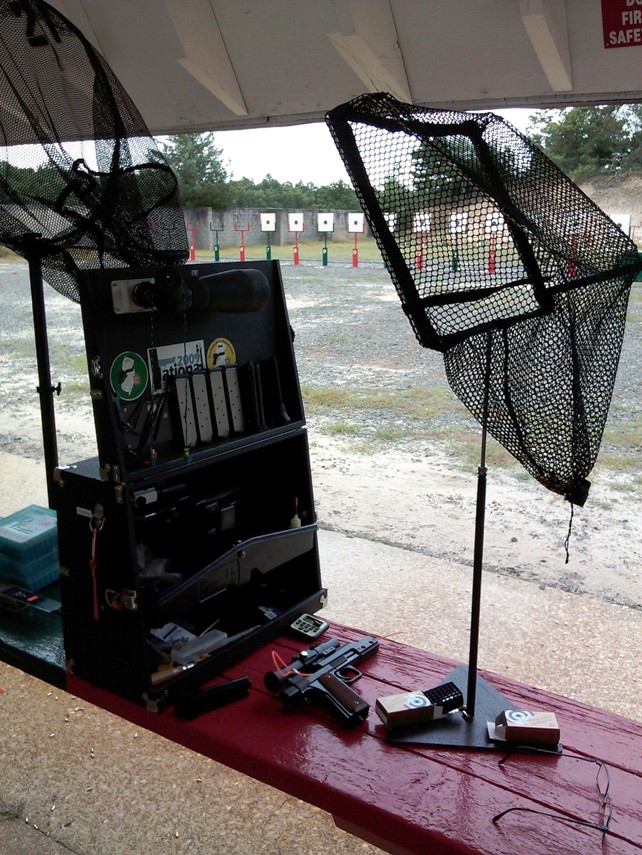
Choosing the right equipment is essential, especially with the cost outlay.
Get Started With Precision Pistol Shooting
If you’d like to try Precision Pistol Shooting, there is a website dedicated to helping you get started, with several informative pieces from top shooters. The site is called “The Encyclopedia of Bullseye Pistol”.
Among the articles is a piece by site owner John Dreyer about essential equipment. There’s a lot to know when laying out the considerable funds for pistols…like whether they are mass-produced or hand built, or the differences between high performance and convertible pistols. Not to mention other necessary equipment, like eye and ear protection, scopes and cleaning supplies. Pistol shooting is not a cheap sport, so spend wisely.
Another piece by Dreyer quotes several Zen philosophies and describes the achievements in pistol shooting in how they relate to such quotes. One example: “A man who has attained mastery of an art reveals it in his every action.” Dreyer compares this to pistol shooting in the sense that once a shooter can sustain an “empty mind”, he can see “underlying principles in everyday life and life in all things”.
Another piece from top shooter Jake Shevlin reveals the “secret” to shooting high scores. It’s the same secret one learns about how to get to Carnegie Hall…practice, practice, practice. The shooter must sacrifice…sacrifice time, money, convenience, and priorities in life to excel at just one thing. Top marksmanship requires a level of commitment unmatched by few endeavors. That, says Shevlin, is the “secret”.
The Encyclopedia of Bullseye Pistol website also features a discussion group, e-mail updates, and links and maps to shooting clubs and ranges.

Try it without ammo until your scores improve.
Multiple Champion Dave Lange on Dry-Firing
Dave Lange’s name appears a lot on the NJ Pistol website. He has won the overall state outdoor championship nine times since its inception in 2001; the only other shooter who has won it more than once is Ron Steinbrecher, who has captured the title just twice. Lange was also the NJ resident champion in 2015, though he lost the overall title to Rich Kang.
Lange is the author of a piece for Shooting Sports USA, linked to the NJ Pistol website, detailing the benefits of dry-firing…firing a weapon without ammunition. With dry-firing, a shooter can focus on weaknesses, like maintaining consistent grip. Lange states in the piece that he practices his dry-firing three times a day, 15 minutes each time.
With dry-firing, a shooter can run a mental program through his mind of executing a successful shot; Lange’s program involves picturing a red dot in the center of the bull’s eye and then picturing the bull’s eye with the bullet hole in the center.
Dry-firing can address any shooter’s specific problem, Lange says. The key is being willing to commit to it until a shooter’s scores improve. Given his success, he’s probably got a point.
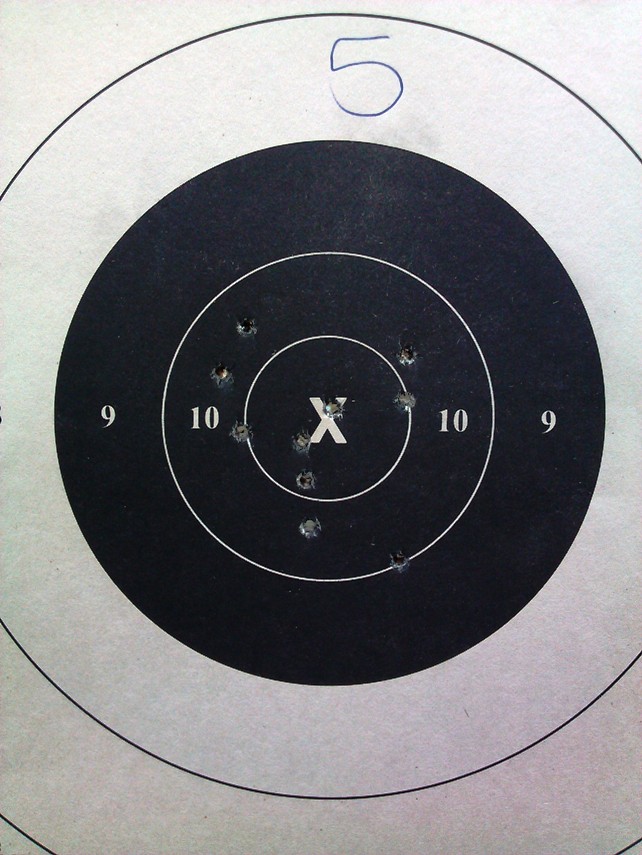
Phenomenal for most of us mortals. Nowhere near good enough to be a national Precision Pistol champ. (photo courtesy Frank Greco)
The Best in the Nation
The NJ State Outdoor Pistol Championship, according to Frank Greco, is the 3rd largest of such events in the nation; the national event, known as the “World Series of the Shooting Sports”, takes place in Camp Perry, Ohio, 40 miles east of Toledo. Events have been held there since 1907.
The overall National Pistol champion for 2015 is Keith Sanderson from Colorado Springs. He scored an incredible 2,655 points out of a possible 2,700. Second was Brian Zins with a score of 2,641. Sanderson is an Olympic gold medalist; Zins was the 2007 NJ State Champion.
To put those scores into perspective, do the math: 2,655 divided by 270 shots equals an average shot score of 9.83…so Sanderson’s average shot was almost always in that three-inch range for ten points, with maybe one or two in a hundred falling outside of it for a nine-pointer.
The difference between Sanderson’s and Zins’ score was just 14 50-yard shots out of 270 that covered a five inch range instead of three.
One wonders if Zins thought about having a donut the week before the match.

